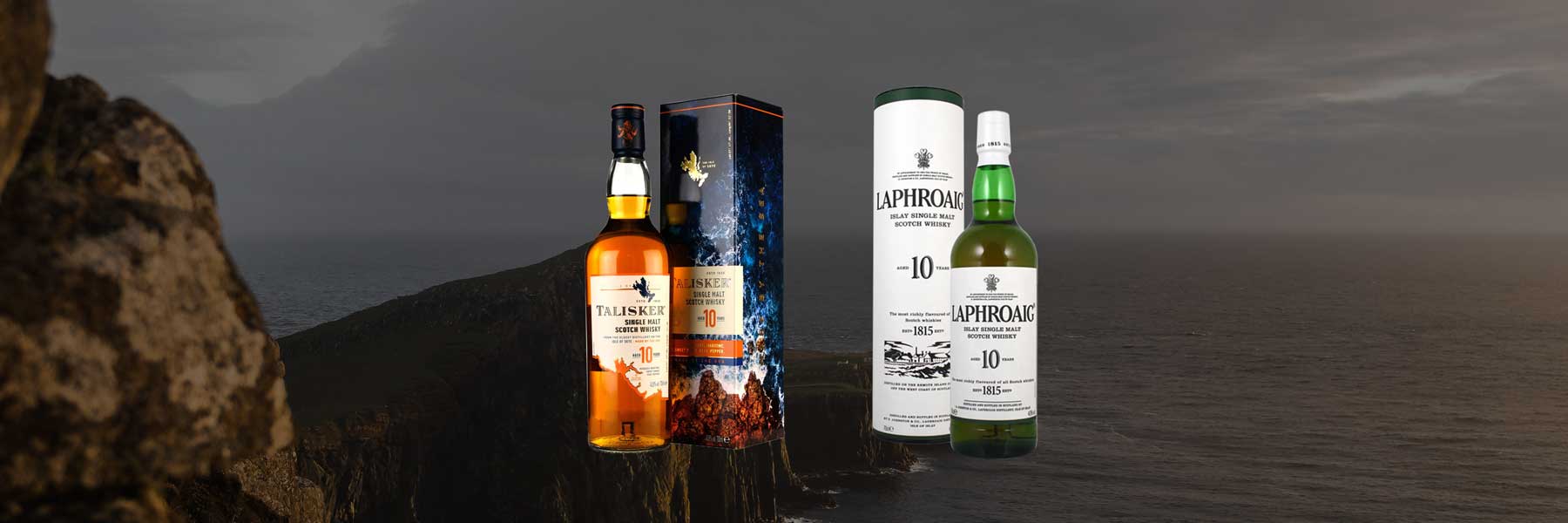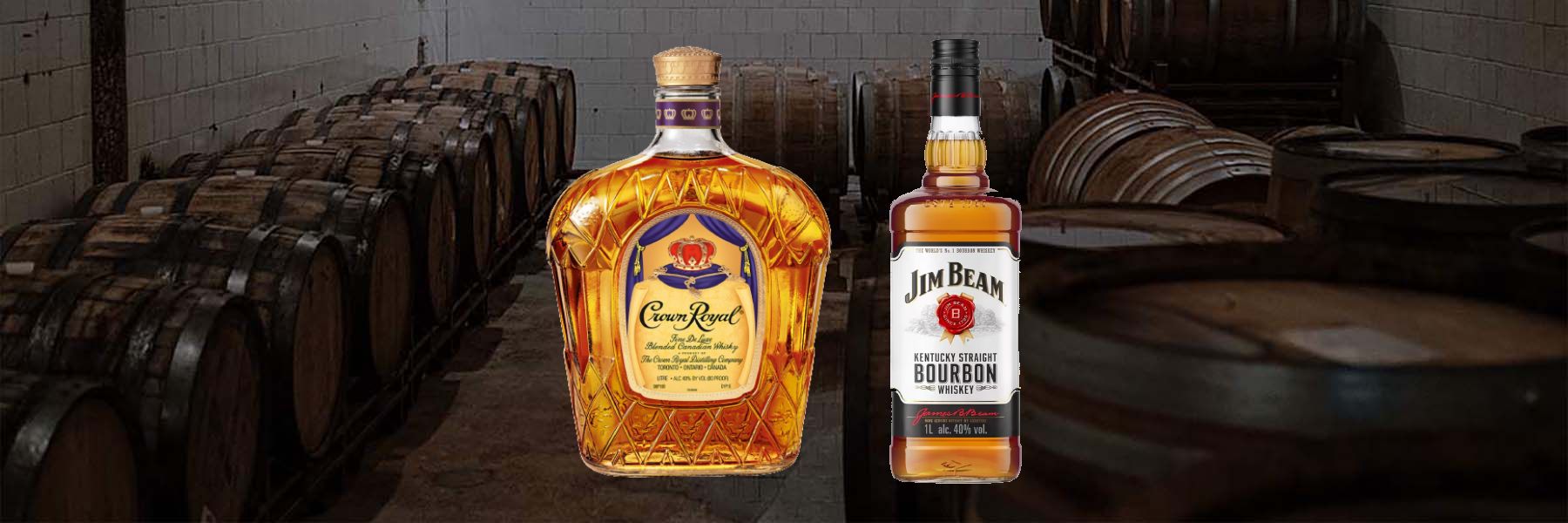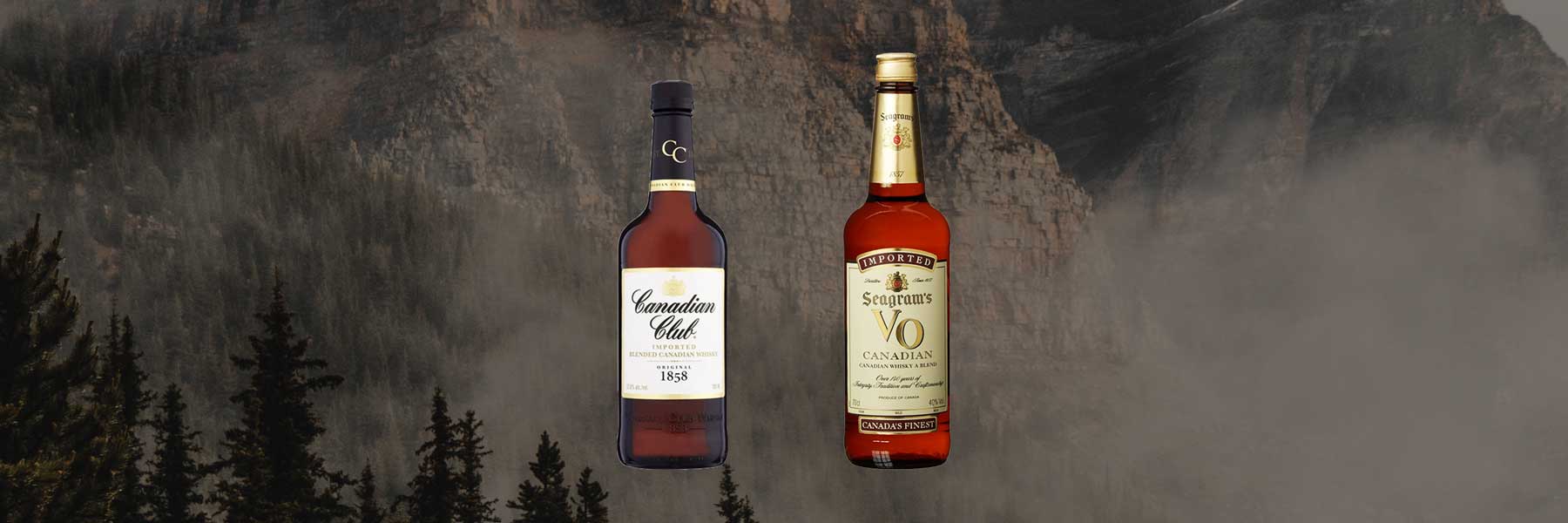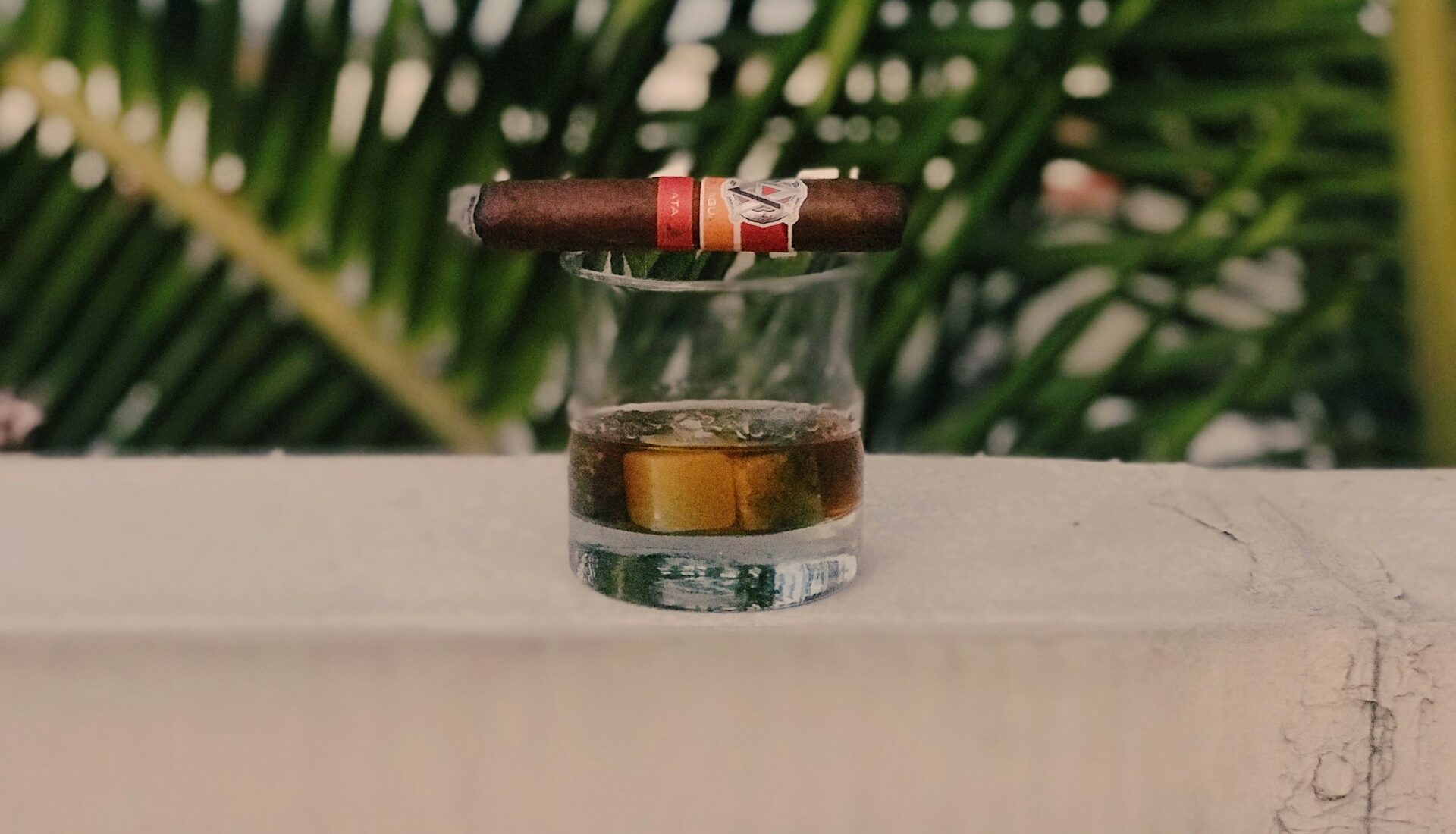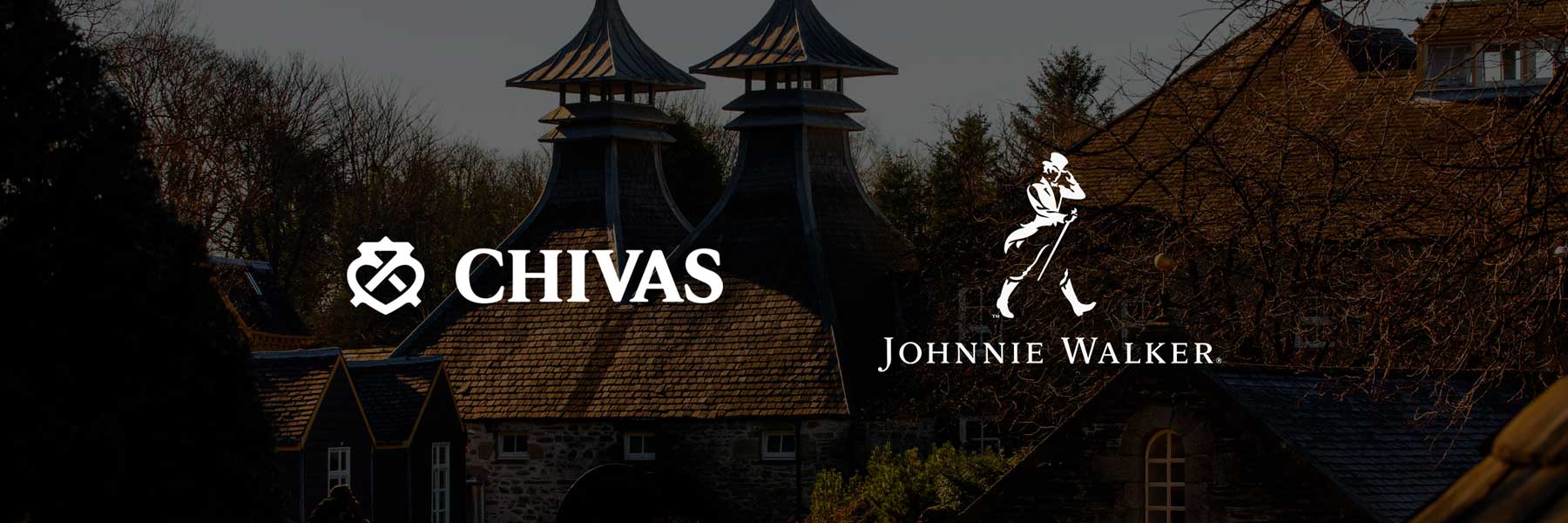Talisker 10 vs Laphroaig 10 | A west coast comparison
As a west coast whisky lover, I’ve been waiting to publish this review for quite some time. If you enjoy a peaty, smoky dram, Talisker and Laphroaig are two of the most popular whiskies in Scotland. Yet, these two single malts bring fairly different flavours to your glass.
The fact that Prince Charles (now King Charles) issued Laphroaig with a royal warrant in 1994, really sets the tone for these island-style whiskies. If it’s good enough for him…
In this blog, I’ve explored the differences between Talisker and Laphroaig in terms of smell, flavour, price and value to help you decide which one is right for you. So whether you’re new to whisky or want to know which bottle you should try next, read on to find out more about Talisker 10 vs Laphroaig 10.
Talisker 10 vs Laphroaig 10, Quick Look Comparison
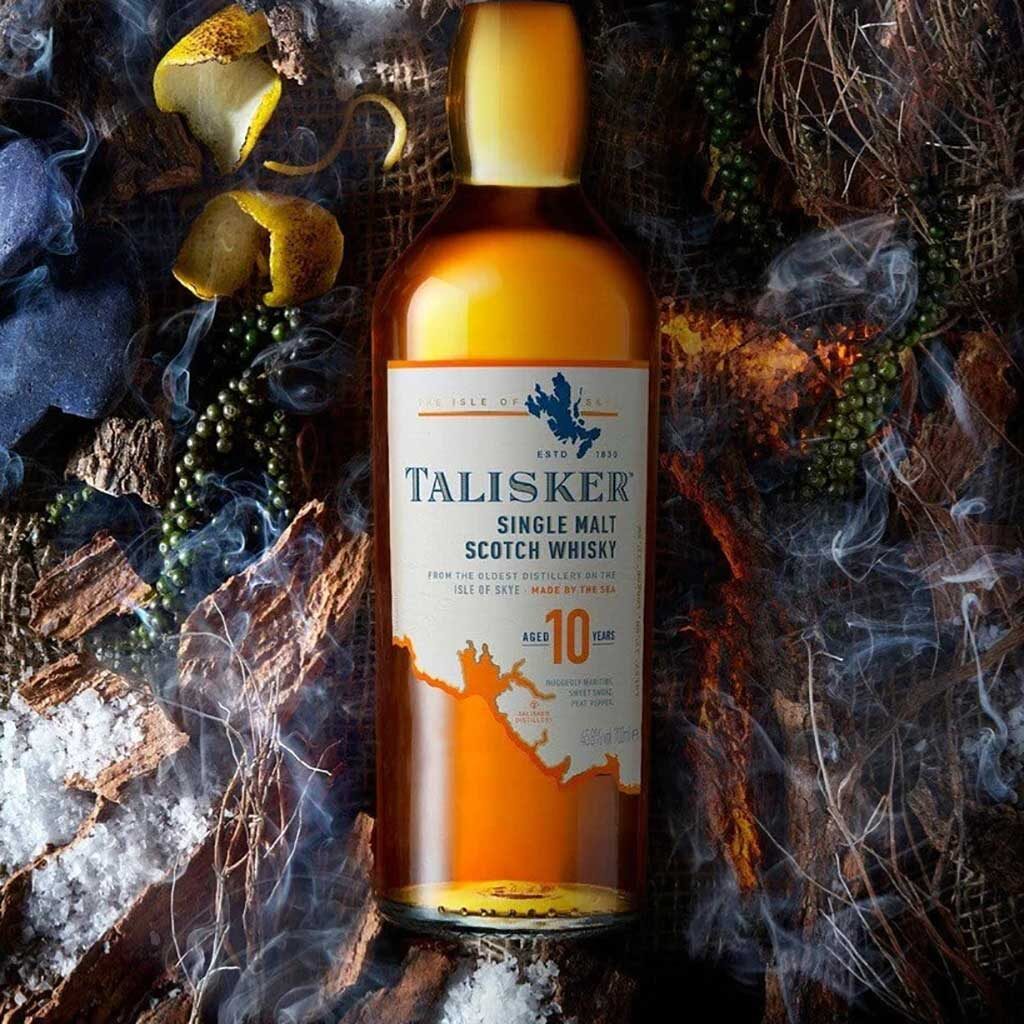
Talisker 10
Nose: Smoke, fruit & maritime
Palate: Smoky & peppery with barley & fruit
Mouthfeel: Oily
Finish: Long, malty & sugary
Age: 10 years (minimum)
Cask: Ex-bourbon
Chill filtered: Yes
Strength: 92 proof / 46% ABV
Price: £45 / $53
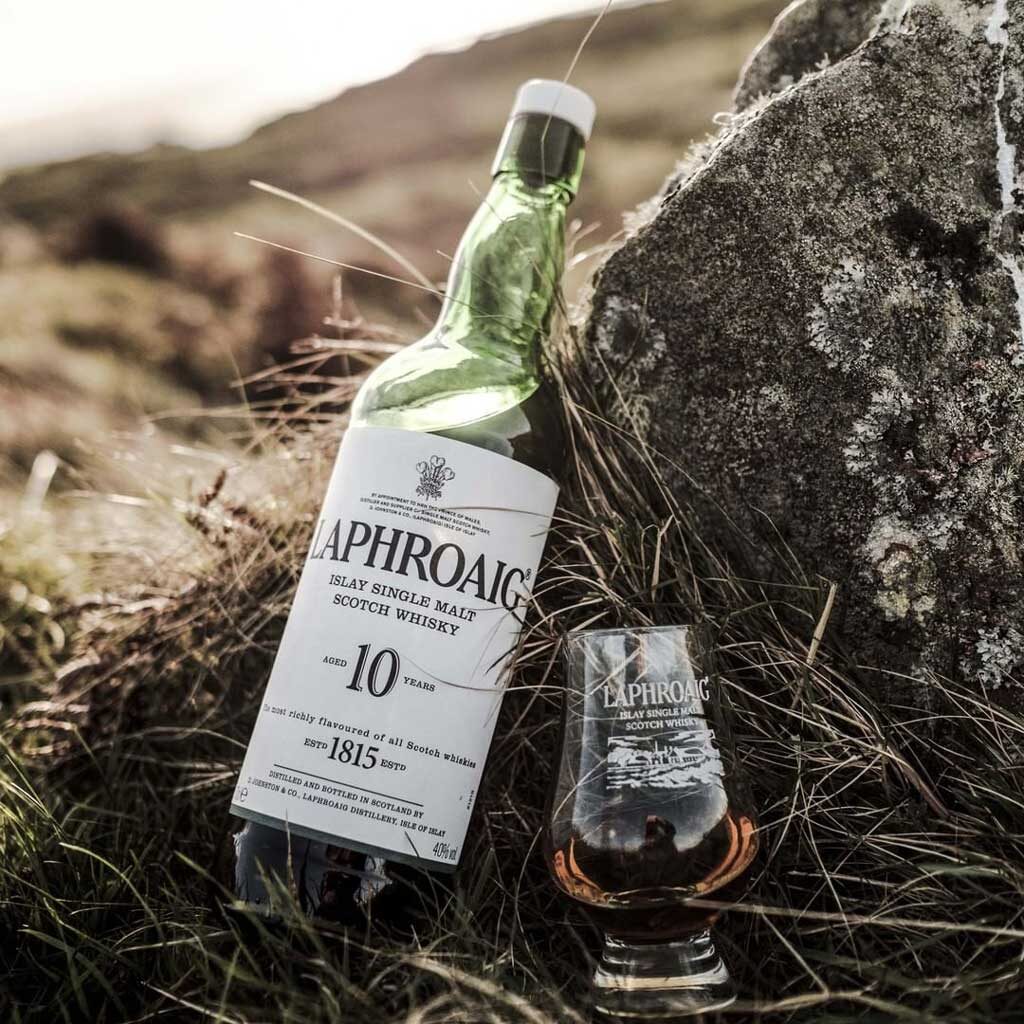
Laphroaig 10
Nose: Smoke, peat, salt & iodine
Palate: Seaweed, TCP, vanilla & spiced oak
Mouthfeel: Oily & dry
Finish: Dry, savoury & tarry
Age: 10 years (minimum)
Cask: Ex-bourbon
Chill filtered: Yes
Strength: 86 proof / 43% ABV
Price: £35 / $42
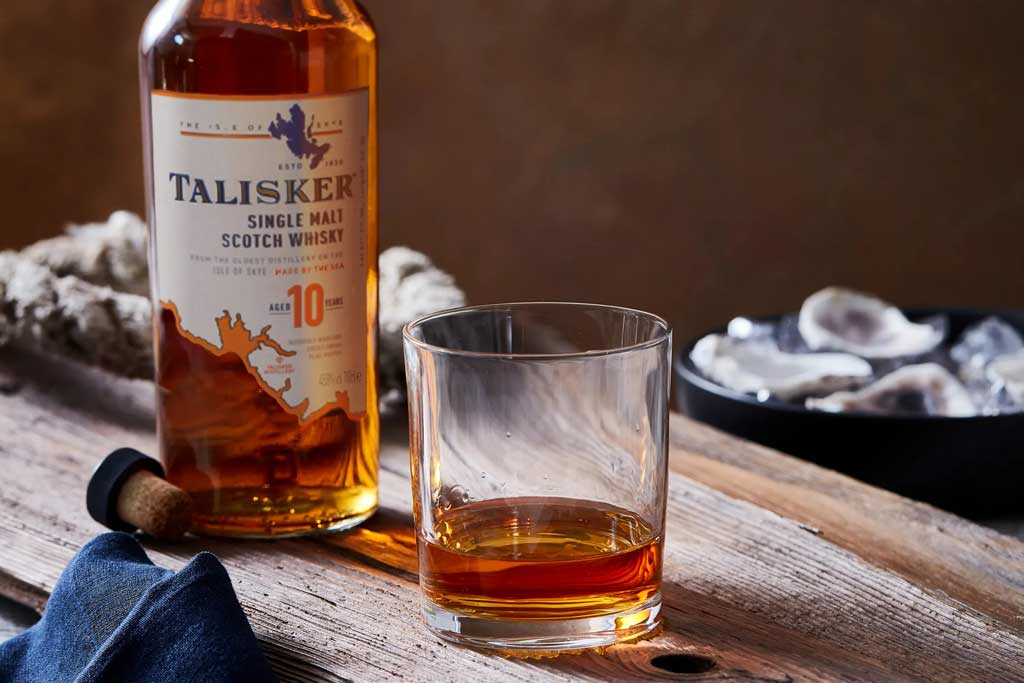
Talisker 10 review
For regular readers, you’ll know my love affair for the Talisker 10 year old . It’s a full-bodied, smoky and spicy whisky that’s surprisingly smooth despite its strong flavours. It has a wonderful combination of maritime sea spray, peat smoke, white pepper and dried fruit character that gives this whisky its widely acclaimed flavour profile. Talisker 10 year old will always make me think of the Isle of Skye but it does come with a slightly heftier price tag compared to other entry level whiskies from the islands.
Aroma: The tantalizing aroma of Talisker 10 is a mix of multiple scents, including the distinctive smoke and sea spray prevailing in all Talisker whiskies. As you inhale deeper, be prepared to encounter smokiness blended with peat, ashes, butterscotch, toffee and dried fruit aromas. Additionally, I notice hints of apricots, apple as well as various citrus peel notes bringing a burst of zestfulness. This whisky really delivers an intense combination between sweet and salty smells that will truly blow your mind.
Flavour: On your first sip, there’s an assertive combination of sweet malt, coastal salt and black peppercorn flavours. This trinity creates a unique spice flavour that is incredibly enjoyable to savour. Further into your, the peatyness starts to come through with lighter citrus peel, grape jelly, butterscotch and caramel accents. On the mid palate, there’s a warming taste of candied ginger and faint liquorice that just begs for another sip.
At 46%, you might prefer to add some water to your whisky. With a little dilution, it opens up the fruitier, more floral nuances of this dram. The pepper heat and herbal peat notes take on a less intense character, allowing more sweetness to come through. A little water helps the subtler, fruitier character that this whisky has to offer.
Mouthfeel: Talisker 10 has a thick and oily mouthfeel. It is spicy and salty, but also sweet. With a little ‘chewing’ you can feel the heat and peatyness on your tongue. No doubt about it, this whisky is a real assault on your tastebuds.
Finish: Talisker 10 has a bold and complex personality, yet the finish is surprisingly light with only moderate, warmth. That said, this white pepper heat lingers long afterwards. The initial flavour of the finish is sweet, leaving behind a delightful blend of smoky and fruity flavours on your palate.
Price: Talisker 10 year old Scotch Whisky very fairly priced at £38–£45 in the UK (or $53 USD), and offers an outstanding dram for its cost. Its flavour and complexity make it a fantastic value buy offering incredible depth for its youthful class.
For just 10 years old, Talisker 10 provides exceptional value for its price point with plenty of in-your-face flavour to enjoy. It has a wonderful coastal, briny and peppery character that remains consistent from nose to finish, making it an ideal whisky for anyone looking to get into single malt scotch at an entry-level price point. If you’re looking to try Talisker for the first time, then the 10 year old bottle is a great place to start.
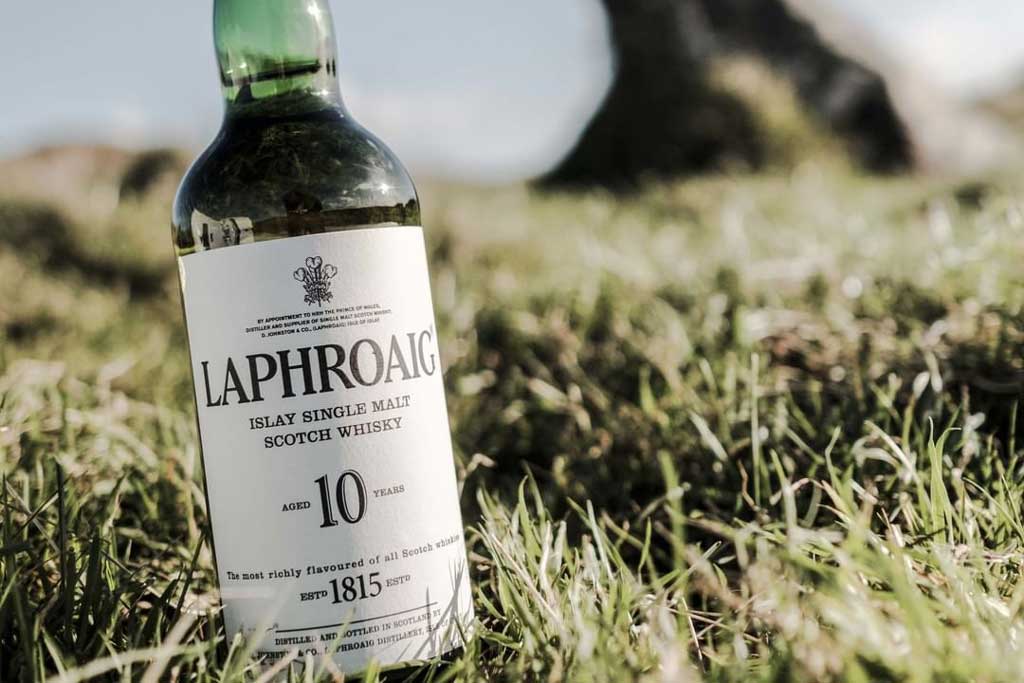
Laphroaig 10 review
For the peat lovers out there, you’ll have likely been lured-in by the Laphroaig poison in your formative whisky years. For many, it’s the ‘gateway drug’ that leads you down a very peaty, smoky rabbit hole… somewhere on isle of Islay.
Undoubtedly, this dram is a real benchmark for peat heads, yielding copious phenol levels that’s enough to penetrate the palate of a hardened smoker. For me, this is glorious whisky that took some getting used to. But with some patience, you’re rewarded with surprising sweetness that keeps you coming back for more.
Aroma: Laphroaig 10 whisky has a strong presence of peat that is smoky, musty, woody and salty. With a gentle swirl in the glass, I detect light notes of citrus sweetness, honey and wet grass. There is also a slightly unpleasant (at first) smell of chemicals and burnt rubber. It leaves behind a light, earthy mix of wet grass and TCP.
Flavour: On the first sip, it’s immediately and predictably peaty. Your nose certainly forewarns you of that – prior to drinking! If you’re new to Islay whiskies, this flavour could be described as organic, grassy and somewhat medicinal.
With a swirl of your glass and your next sip comes a background heat of black peppercorns which, if you let it, subsides to a rewarding citrussy sweetness. For me, this is the ‘pull’ of this whisky. It’s both the reward and counterbalance to peat smoke that can initially seem like the only major flavour in this dram.
On the mid palate, you get more sweetness with subtle hints of fudge, vanilla and interesting notes of liquorice.
Mouthfeel: Laphroaig 10 is medium to full bodied and has an oily, viscous texture which coats your tongue. I’d go as far to say this whisky is slightly briny which can be a little bitter (from the peat) before the sweetness kicks in. This bitterness sort of tingles your mouth which compliments the sweetness.
Finish: Long and smoky. It leaves a dry sort of wake in your mouth with ashy, tarry notes. There’s also a hint of sweetness that lingers which I find really enjoyable.
Price: Positioned slightly cheaper than the Talisker 10, the Laphroaig 10 year old is their flagship bottle. At a very reasonable price, you can experience one of Islay’s most iconic whiskies, packed full of pungent smoke, peat and oak spice.
In terms of value, I think the Laphroaig 10 gives you a real sense of the distillery character, which for $40 or so, is a pretty good deal. Considering the next step up would be their 10 year old cask strength edition (fetching $90) you’re getting the exact same flavour profile but in a lower proof/ABV% spirit.
The fact you’re reading this review indicates your love for peat and smoke. Laphroaig are famous for these bold pungent flavours and their 10 year old expression is best way for you to experience this classic Islay single malt.
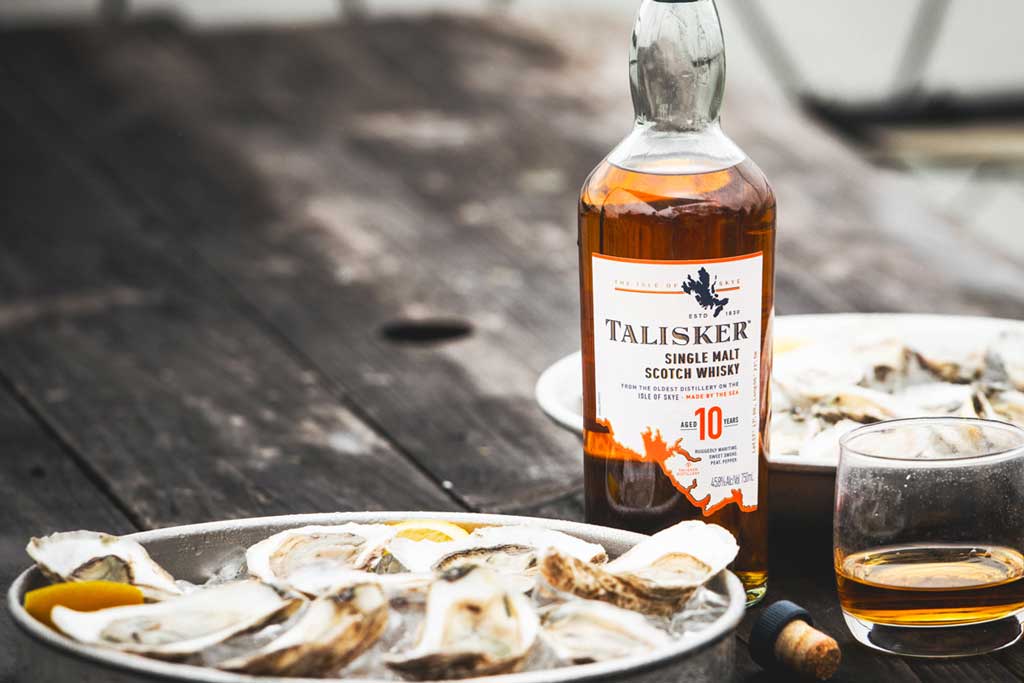
Food pairings
Talisker 10 year old
Talisker’s spicy, smoky flavours work especially well with roasted meats, smoked salmon and other fish dishes such as shellfish. The sweetness of Talisker adds an extra depth to dishes such as pork chops, grilled chicken, and wild game meats. This whisky can also be paired with creamy sauces, stronger cheeses like cheddar, blue cheese or brie, and even dark chocolate desserts.
Laphroaig 10 year old
Pairing Laphroaig with food is something of a balancing act. Despite its upfront smoke, peat and briny flavours, it’s actually relitively delicate also. For this reason, I’d suggest avoiding bold spicy foods such as curry. Instead, fish or shell fish would be the perfect match for the salty smoky flavours in this whisky. For meats, mutton, lamb or chicken would also make an excellent pairing. Charred vegetables such as aubergine or burnt lettuce also tie-in nicely with the smokiness.
Believe it or not, Laphroaig also makes an excellent flavouring for ice cream, as made by the Edinburgh’s legendary Mary’s Milk Bar.
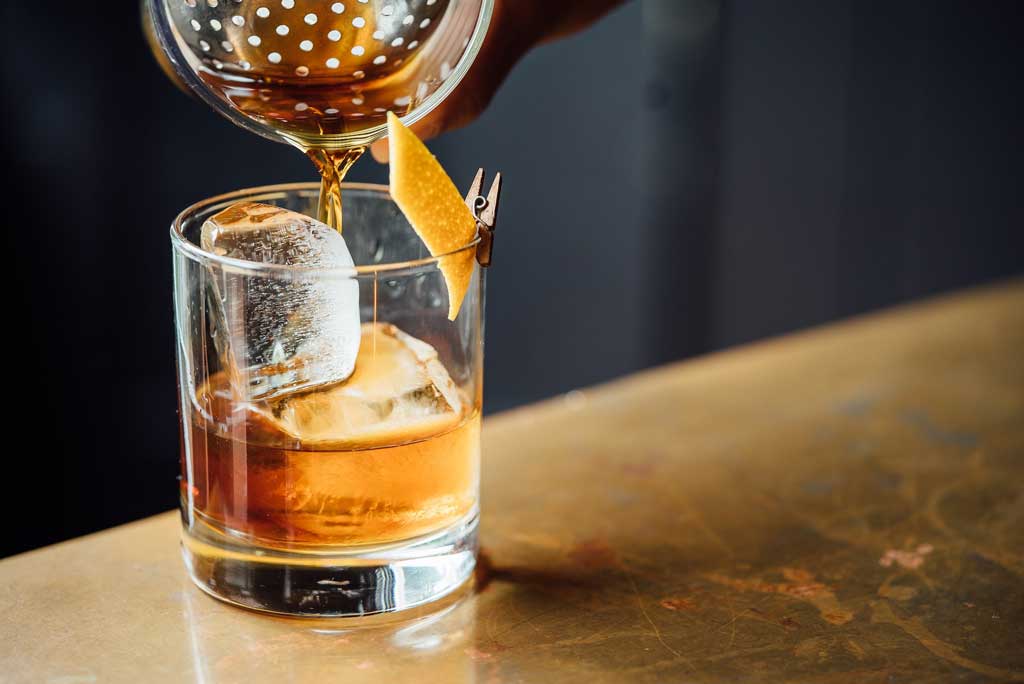
Cocktail suggestions
Talisker 10 year old is best enjoyed neat or with a few drops of water to release the fruitier, floral notes. However, this smoky whisky can also be used as a base spirit in cocktails, such as a Rob Roy, Rusty Nail or an indulgent bubbly champagne 57. Click the drop-downs below to see these cocktail recipes.
Laphroaig 10 is best served neat or over some cubes of ice for a slow, gradual dilution in the warmer months. However, due to it’s strong smoky flavour, this whisky makes a potent component in cocktails such as a Laphroaig Penicillin, Pineapple Peat or a classic Old Fashioned.
Final thoughts
Comparing Talisker 10 vs Laphroaig 10, each bring their own unique character to your drinks cabinet. Both are positioned as core-offerings, demonstrating distillery characteristics at reasonable entry-level prices.
The Talisker 10 isn’t as smoky compared to the Laphroaig. With its peated barley but lower phenols, it’s still an enjoyably smoky dram. What makes this whisky so good is its wonderful chilli pepper heat with addictive salty sweet flavours. Later in the glass, you get these floral, honeyed notes which makes you come back for more. Overall, it’s a more instantly balanced experience than the Laphroaig which favours a less experienced palate. As one of only two distilleries on Skye, the Talisker 10 year old is a unique specimen that I’d highly recommend to anyone.
On the other hand, the Laphroaig 10 is a somewhat ‘game of two halves’. It has this polarised tension between big bold smoke and delicate secondary sweet notes. It takes patience to get past the peaty, medicinal flavours, which for some, might be a little too much. However, there’s most certainly a pleasing sweetness that follows. If you give this whisky some time, it can really grow on you. It certainly does the trick for King Charles!
Author’s recommendation
For true value and a more balanced whisky, I’d actually go with the slightly more expensive Talisker 10 year old. For the extra money, I personally think this whisky brings exceptional value and has a great depth of character. With lashings of sweet smoke, spice and coastal saltiness, I think it’s a better choice over the Laphroaig 10.
However, as a bit of a peat-head myself, the Laphroaig 10 is by no means a dud. If you enjoy the big bold flavours from Islay, this is by far a deserved staple for your drinks shelf. For little over £35 ($40) or so, this whisky is a great for those nights when you fancy something bolder and a little more brooding.
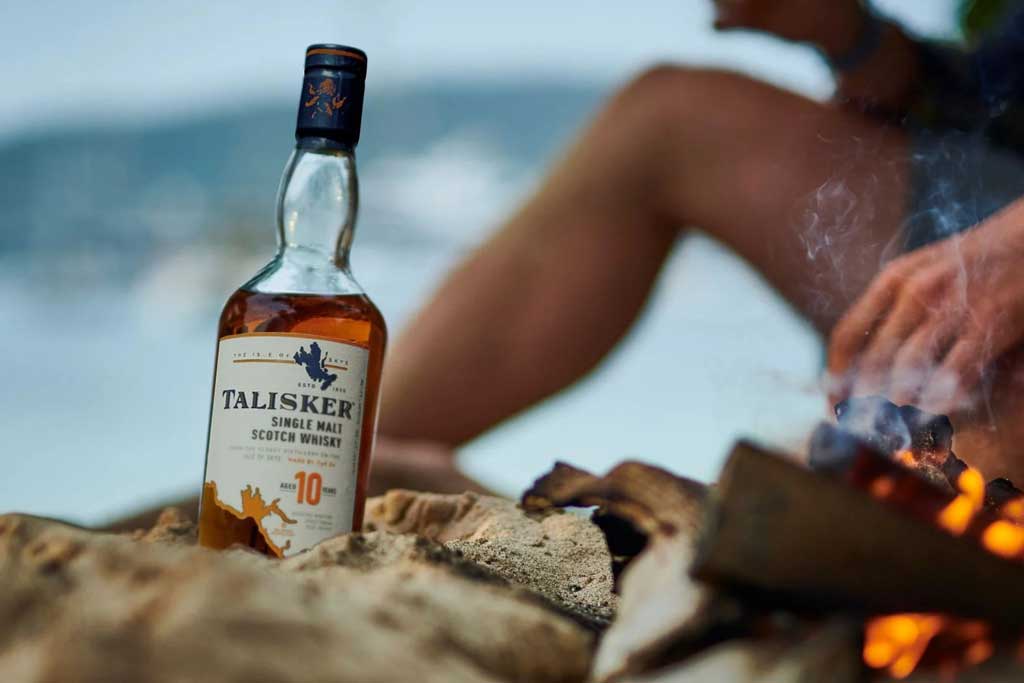
Talisker 10 vs Laphroaig 10 FAQ’s
Is Talisker Smokey or peaty?
Talisker whisky has a smoky flavour, but it is not as peaty compared to the Laphroaig 10. Talisker brings a sweet smoke with spicy and coastal saltiness. Laphroaig 10 whisky is more peaty and medicinal in flavour with big bold smoke and delicate secondary sweet notes.
Is Talisker an Islay?
No, Talisker whisky is not an Islay whisky. Talisker is produced on the Isle of Skye located in the Inner Hebrides archipelago, off Scotland’s rugged west coast. Talisker whisky distillery was established in 1830 and is one of only two operating distilleries located on the Isle of Skye. Talisker is known for its sweet smoky flavour with hints of spice and coastal saltiness.
Is Talisker a good Scotch?
Yes, Talisker 10 is a great Scotch whisky. Talisker has a sweet smoky flavour with a characteristic black pepper and chilli heat mixed with a coastal briny tang. It’s known for its balanced character and subtle complexities that make it stand out among other Scotch whiskies. It’s also reasonably priced, making it an excellent value compared to some more expensive Scotches on the market today. Talisker is definitely worth trying if you’re looking for an enjoyable single malt Scotch to savour.
Is Laphroaig a good whiskey?
Laphroaig 10 is undoubtedly a great whiskey, particularly for fans of smoky, peaty whiskies. The bold flavours it offers are truly unique, with a medicinal-like quality that’s characteristic of the Laphroaig character. It takes time to get past the iodine (almost TCP) notes, but once you do there’s a pleasing sweetness that follows.
What really sets Laphroaig apart from other whiskeys is its high phenol content which gives it an intense smokiness and salty character. Although it may be too much for some palates, those who appreciate more intense whisky flavours will find this an enjoyable dram indeed. With its reasonable price tag of around $40, Laphroaig 10 is definitely worth trying if you’re looking to explore complex and interesting whisky flavours without breaking the bank.
Why do people like Laphroaig?
People like Laphroaig because it has an intense smokiness and salty character due to its high phenol content. The malted barley used to make this whisky is heavily peated using a two-step kilning process. This offers a bold smoky flavour profile with medicinal-like notes and a pleasing sweetness that follows. For those who appreciate more intense whisky flavours, this makes for an enjoyable dram and is great value for the price of around $40.
What is special about Laphroaig?
Laphroaig is a relatively unique Islay whisky due to it’s Royal Warrant, strong smoky flavours and traditional floor maltings. King Charles issued the distillery with it’s Royal Warrant back in 1994 and remains an advocate for this heavily peated Scotch. Furthermore, Laphroaig are amongst just 7 distilleries in Scotland who continue to use the traditional floor malting method at their distillery on the south coast of Islay.
Floor malting is the traditional method of spreading steeped barley across a large upper-warehouse floor. Circulating air through the warehouse windows encourages the wet grain to germinate, where enzymes develop within.
During germination, Maltmen manually ‘turn’ the grain with small ploughs or spades to encourage cooling and even air circulation. This aggravation also prevents the small sprouting rootlets from getting tangled. The barley is then transferred to another room where it is double-kilned; first with peat smoke, then with heat to dry the grain and halt the germination. This is what gives Laphroaig whisky is signature smoky flavour.
How smoky is Laphroaig 10?
The phenol content of Laphroaig 10 is quite high at 55-65 PPM (parts per million) – making it one of the smokiest whiskies available from Islay. Compared to most, its an intensely smoky Scotch whisky, with a distinctive peat and medicinal character. It’s made using heavily peated malted barley which is kilned during the two-step process known as ‘double kilning’. This process creates a smoky flavour profile that has notes of iodine, TCP and wood smoke, complemented by a sweetness from the barley and oak barrels used for aging.
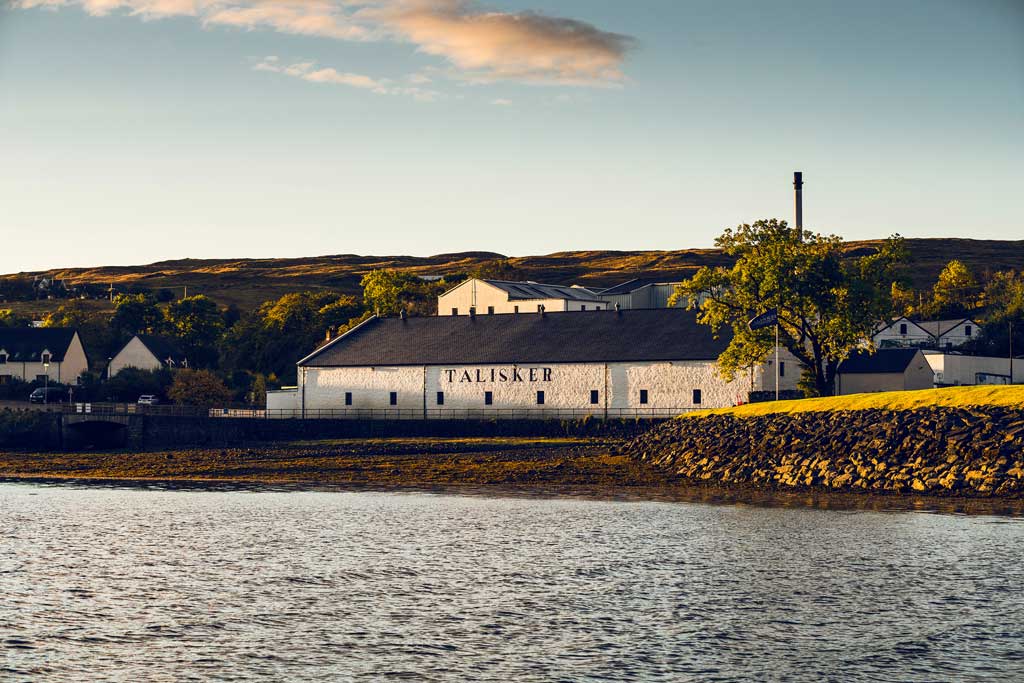
More about Talisker
The Talisker distillery is located in Carbost, Scotland on the Minginish Peninsula on the Isle of Skye. Since 1830, it was the only licenced distillery on the island until it was later joined by Torbhaig.
Talisker is known for it’s sulphury, spicy whiskies which come from its unusual distillation configuration. The lyne arms from their two bulbous wash stills feature multiple bends and kinks which limit the amount of reflux during the first distillation. This produces a characteristically heavy spirit, producing a lot of peppery, chilli heat.
To this day, Talisker continue to use traditional worm tubs to condense their distillate. This old fashioned method is fairly rare nowadays, with most distilleries opting for modernised shell and tube condensers.
Talisker produce a wide range of single malts. This includes a range of lower-end NAS whiskies, their flagship 10 year old and their 8, 11, 15, 25, 30 and 44 year old expressions. If you’re keen to learn more about these whiskies, you might want to read our other Talisker reviews;
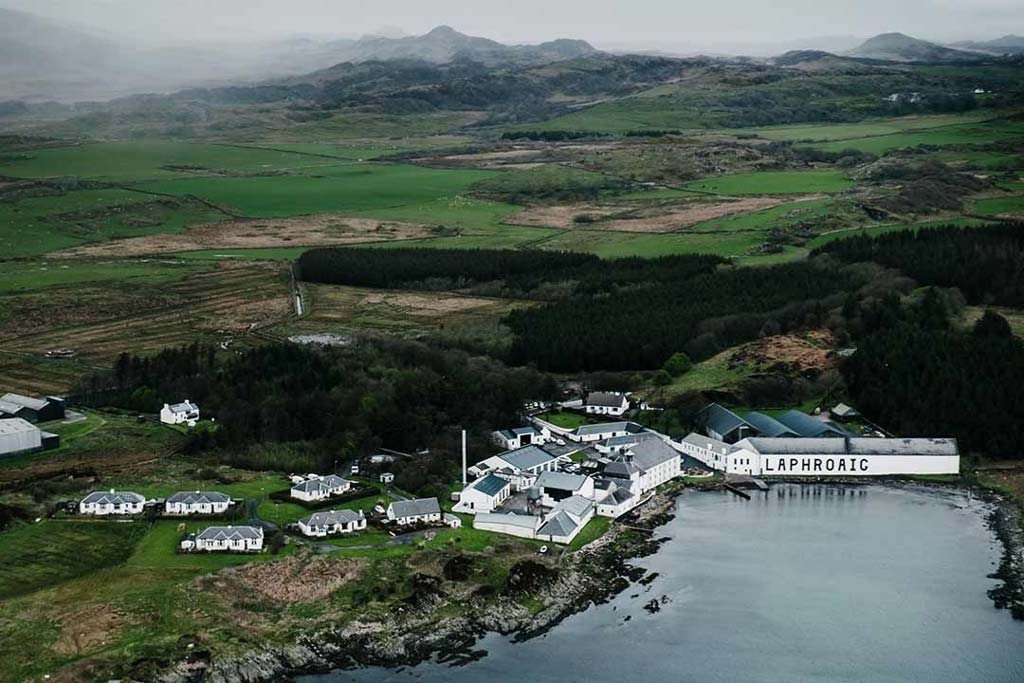
More about Laphroaig
The Laphroaig Distillery is located on the Isle of Islay, a small island off the west coast of Scotland. It’s situated on the south coast near Port Ellen. The distillery has been producing whisky since 1815 and remains one of the most well-known brands in Scotland.
For years, Laphroaig has been renowned for its heavily peated single malt whiskies. For centuries, it’s been made with water from an underground spring that runs through the property and barley that’s been locally sourced from the surrounding area. This combination creates a unique smoky flavour profile, complemented by honey sweetness and medicinal notes.
Famously, during the American prohibition of alcohol, Laphroaig was one of the only permissible whiskies due to it’s strong iodine smell. US officials were persuaded by previous Laphroaig owner Ian Hunter who claimed that it could be used for medicinal purposes. This savvy business move penetrated the otherwise dry American market, which maintained export sales during the 1920’s and early ’30s. It also established Laphroaig as one of the most famous Scottish single malts, a status it still holds today.
If you’d like to know more about Laphroaig, check out our other related articles;


